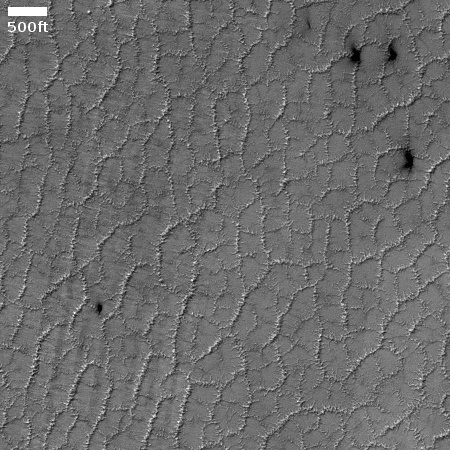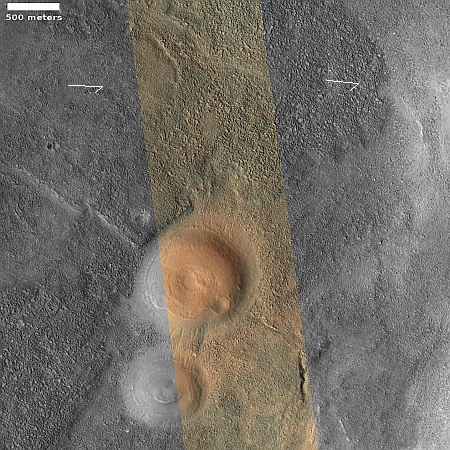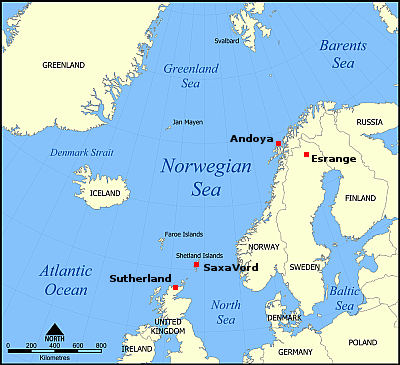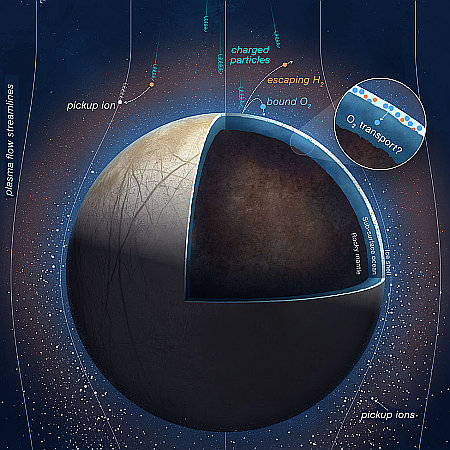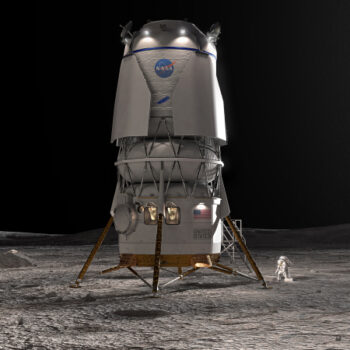
An early visualization of Blue Moon
According to one Blue Origin official, the company is now targeting its first unmanned landing of its manned lunar lander, Blue Moon, for sometime in 2025, far sooner than previously expected.
Jeff Bezos’ Blue Origin space venture is aiming to send an uncrewed lander to the surface of the moon in the next 12 to 16 months, according to the executive in charge of the development program. John Couluris, senior vice president for lunar permanence at Blue Origin, provided an update on the company’s moon lander program on CBS’ “60 Minutes” news program on Sunday. “We’re expecting to land on the moon between 12 and 16 months from today,” Couluris said. “I understand I’m saying that publicly, but that’s what our team is aiming towards.”
Blue Moon is shown in the graphic to the right. Though being built to provide NASA a second manned lander in addtion to SpaceX’s Starship, this first mission will simply bring cargo to the surface, as a test of the lander itself.
If Blue Origin can keep even somewhat close to this schedule, we will likely have two manned moon landers doing test flights at almost the same time.
A sidebar: Note the lander’s height, as well as the narrow footprint of its landing legs. New graphics of this lander from Blue Origin show the same high center of gravity with an even narrower footprint for the legs. One wonders why. Wouldn’t it make sense to have those legs deploy outward more?
This issue applies also to SpaceX’s Starship, which will also have a high center of gravity. When SpaceX’s rockets land on Earth (both Falcon 9 boosters and Starship), most of their fuel is gone so the bulk of the mass is near the bottom where the engines are, even though the boosters stand very high. On the Moon however these vehicles will be landing heavily loaded, with cargo and fuel. This raises a stability question that was illustrated sadly by the tipping over recently of Intuitive Machines Odysseus lander.
I am not an engineer, so I admit that my off the cuff analysis here is very questionable. Nonetheless, one wonders.

